According to Britvic’s Soft Drinks Category Report 2002, forecourts have maintained value and volume in the soft drinks sector and reversed a significant decline that has been seen over previous years. “Soft drinks were worth £227m to forecourts last year,” says Sue Garfitt, director of category planning at Britvic. “Forecourts are at the heartland of convenience grocery, offering a fill-up when doing the weekly shop or a top-up shop when petrol is needed.”
With soft drinks now accounting for nearly 10 per cent of the average forecourt shop’s sales (source: IGD), paying a little extra attention to the fixture can make a real difference to the bottom line, particularly in the summer months.
The choice of soft drinks has never been so vast – there were 250 new soft drinks launches last year as manufacturers fought for a piece of an increasingly diverse market. But forecourts, with limited space, can only stock so many products – and these should be the ones that give the best return for the space. According to Britvic’s report, the following categories are the most important to forecourts:
COLAS
Cola remains the best-selling soft drinks category in forecourts – accounting for around one-third of soft drinks sales at some £75m. However, both value and volume of cola sales through forecourts are down by three per cent (Britvic).
Pepsi and Coca-Cola continue to dominate the market, driving sales by introducing new variants and packaging.
Take Coca-Cola, for example. Last year it launched Diet Coke with Lemon, which it says outperformed all company expectations, with more than £38m-worth of sales since launch (ACNielsen total take-home 52 w/e 22 Feb 03).
CCE hopes to repeat this success with this year’s launch – Vanilla Coke, which Norman Brodie, marketing director of CCE, says is “the biggest launch from CCE in 20 years”.
CCE says it has had success in the impulse sector with its ‘share size’ 2ltr bottles, with more than 80 per cent of sales of these being incremental to Coke, so bringing new consumers to the brand. The company also says share size has ‘significantly over- performed’ where secondary siting has been achieved, specifically within the snacks section and adjacent to chilled convenience food.
To further drive sales of Coca-Cola, CCE is poised to roll out a meal deal promotion that it has been trialling with Total to the wider forecourt market. From the end of June, forecourt posters, pump crowners, shelf wobblers and sandwich stickers flagged up the link between sandwiches and Coca-Cola and Diet Coke – and CCE says sales of Coke increased tremendously as a result. Jason Hood, CCE channel marketing controller says: “With sales of sandwiches running at £3bn and rising but only 31 per cent of sandwiches being purchased with a soft drink there is a great opportunity for retailers to offer an entire meal solution. The key to getting your lunchtime drinks offer right is to offer chilled drinks adjacent to the sandwiches with good communication of the link.”
And Martin Kell, category manager at Total adds: “We have worked closely with CCE to identify the potential sales increase by linking top-selling drinks with sandwiches. New planograms place these key drinks lines directly next to sandwiches to make it easier for customers to purchase both items.”
Meanwhile, Pepsi says over the past year it has seen value growth of 6.8 per cent in forecourts. Like Coca-Cola, Pepsi has been adding to its parent brand with the launch of Pepsi Twist earlier this year. Aimed at 16-24 year-olds, Pepsi says Twist achieved more than £4.1m of sales in the first three months of its launch. Of course, the launch was backed by a massive support campaign featuring international music and sports stars.
Pepsi says it is important to stock all its variants in forecourts– Pepsi regular, Diet Pepsi, Pepsi Max and Pepsi Twist – as they appeal to different consumers at different times. “Research shows that consumers want well-known premium brands and they want a choice. By stocking all four variants, customers won’t go home empty-handed and retailers won’t miss out on a valuable sale,” says a Britvic spokesperson.
A variety of pack sizes is also important, says Britvic, with 2ltr bottles becoming increasingly popular. “Over 40 per cent of soft drinks purchases within impulse are bought to consume at home and as the majority of people drive to forecourts, this makes them potential purchasers of bigger packs.”
Finally, Britvic says it is important for retailers to stock both Pepsi and Coca-Cola to maximise profits – placing a Pepsi chiller next to an existing Coca-Cola chiller, for example, can increase sales by up to 21 per cent, it says.
FUNCTIONAL DRINKS
Functional drinks are of greater importance in forecourts – where they are worth £42m in value terms – than elsewhere in the impulse channel. Brands such as Red Bull, which claims to be the second-best selling soft drink through forecourts in volume terms, have been instrumental to this growth. Red Bull is the only functional energy drink that has been scientifically proven to help combat driver fatigue and the brand focuses on delivering this message to motorists in its marketing, with a £2m campaign launched in June targeting forecourts. Red Bull says sales are still on the rise in forecourts with Red Bull
Stimulation and Sugarfree growing at 25 per cent (Jan-mid-June 2003) – indeed, Red Bull says its sugarfree variant alone has added 15 per cent to the energy drink category in forecourts.
Meanwhile, V energy drink, which reported huge increases in sales of up to 400 per cent following its sponsorship of TV show I’m a Celebrity Get Me Out of Here claims to be the second-best selling functional energy drink on the market. Furthermore, Petty, Wood says that V’s positioning as a ‘day time energy boost’ as opposed to ‘night time mixer’ and its marketing stance as a ‘natural stimulant for drivers’, makes it particularly relevant to forecourts and it is now stocked by the likes of BP, Esso, Shell and Q8. Petty, Wood’s commercial director John Weaver says: “V is still a relatively new brand in the UK, however, we are confident that with the right support, it has the potential to mirror the success it enjoys in both Australia & New Zealand where it outsells the market leader by three to one, and enjoys a similar in-store profile to that of Coca-Cola. With the sponsorship and a massive PR and support campaign, we believe V’s potential to expand the sector is immense.”
Elsewhere, Lucozade has been focusing on new product development, particularly in the sports sub-sector, which is outperforming growth in the total energy drinks market.
Jane Dosanjh, GSK customer development manager, says despite the niche targeting of sports drinks, forecourts will miss sales if they don’t stock them. “Lucozade Sport is not only the UK’s number one sports drink but is also recommended before, during and after physical activity. Lucozade Sport is therefore a wholly appropriate brand for petrol forecourts – for consumers travelling to and from the gym for example.
“Sports drinks are also the fastest growing segment within energy drinks in multiple forecourts. Over half of sports participants buy their sports drink before they reach their location.”
In the same vein, Calypso recently launch a Pro>Performance isotonic sports drink in conjunction with Umbro, sponsor of the England, Celtic, Chelsea and Ireland football teams. The idea is that the combination of Calypso’s expertise in soft drinks and Umbro’s high profile in sportswear and sponsorship will give the new drink a headstart in an increasingly brand-aware market. It comes in a PET bottle with sports cap for spill-free drinking in the car as well as at the gym. So sure is Calypso of the product’s success in forecourts that it has set up a telephone hotline for retailers – by dialling 01978 668484 they will receive an Umbro Isotonic pos pack including window stickers and shelf wobblers.
Meanwhile, Red Devil looks set to have an increased profile – Britvic acquired the rights to the energy drink last year and is putting £4m of support behind it this summer.
FRUIT FIZZ
Despite trends towards still drinks in the overall soft drinks market, Fruit Fizz remains the third-largest soft drinks category in forecourts, with a value of £32m through forecourts, up seven per cent (source: Britvic).
One of the most noticeable trends in this market has been the extension of established brands into new variants – which manufacturers say helps grow sales not only of the variant but of the parent brand too.
A strong example of this was last year’s launch of Fanta Fruit Twist, which played a big part in making the Fanta brand the fastest growing grocery brand in the UK in 2002. Some 87 per cent of Fanta’s 50 per cent year on year growth came from the launch of Fanta Fruit Twist while the sub-brand was worth £43m within a year.
Meanwhile, last month CCE relaunched its established Lilt brand with new packaging, new TV ads and a brand new banana and peach flavour.
But completely new products are also important to forecourts – consumers will have seen them advertised on TV and expect to find them in your store. Britvic for example has put £6.5m behind its launch package for Freekee Soda, its new ‘texture based fizz’ drink, which is a blend of milk with fruit juices and is being heavily promoted this summer.
Kids, of course, make up a large proportion of fruit fizz consumers, and help is on hand for retailers to target this fickle category. Hall & Woodhouse, whose Panda Pops range claims to lead the kids’ fizzy PET market with a 24.4 per cent share, says its Popzone concept allows retailers to manage the kids soft drinks category precisely. With coloured graphics designed to appeal to kids, it enables retailers to offer a bespoke selection of Popzone products. Graham Jacobs, marketing manager, says: “The kids soft drinks market is no different from any other in that consumers prioritise value for money and quality.” He adds that while Panda Pops fulfils the demand for carbonated drinks, and these remain the keystone of the this market, Panda Still, Panda Clear and Simpsons flavoured waters are also included in Popzone to offer consumers a choice.
JUICE DRINKS
Juice drinks recorded a large boost in sales through forecourts in 2002, with 17 per cent gains in value taking it to £30m.
Tropicana says that within the sector, chilled fruit juice is showing the strongest significant growth, up 21.5 per cent year on year, driven by strong performances in both not-from-concentrate and from-concentrate. Adult juice drinks are also developing rapidly, up 107 per cent, according to Tropicana while freshly squeezed and kids juice drinks are significantly under performing, down 2.7 per cent and 25.4 per cent respectively.
To help convenience retailers grow their chilled juice sales, Tropicana has developed a ‘Capitalising on convenience’ guide to help maximise chiller space. Tips within the guide include siting the take home range of juice next to the diary fixture to encourage consumers to purchase of premium products while top-up shopping for staples.
Health benefits are currently being heavily promoted on many juice brands. Tropicana’s latest campaign, for example, publicises the health benefits of potassium, which is found in its orange juice. The initiative includes on-pack potassium information and a logo featuring an orange with a heart-shaped leaf. Pos material is also available.
Meanwhile, Five Alive’s three variants – Citrus Burst, Berry Blast and Tropical Hit – from CCE are now fortified with vitamins and minerals. The brand also has a new look with new graphics and a 1ltr tetra-pak format as well as 250ml cartons. A £3.5m package supports the relaunch, flagging up the health benefits.
Finally, Sunny D, which has a 15 per cent juice content, has shifted its marketing to focus on nutritional issues and the role of Sunny D as an alternative to fizzy drinks, with TV ads and print advertising to this effect.
SQUASH
Although only accounting for two per cent of soft drinks sales in forecourts, squash showed the highest growth of all soft drinks in forecourts last year, with 24 per cent gains in value (source: Britvic/AC Nielsen Mat 28 Dec 02) taking it to £2m.
David Howker, forecourt manager at Kitchens in Burnley, Lancs, for example, says: “Local people like to use the convenience shop to top-up on household items so we sell a lot of Robinsons squash.”
Certainly, Britvic puts a lot of support behind its Robinsons squash brand – it says Robinsons is drunk by more than half of all UK households with sales reaching £232m last year, a rise of 14 per cent.
Britvic’s latest figures show that 26 per cent of people run out of squash between shops, meaning a quarter of people now make planned top-up purchases including large family packs traditionally bought in multiples.
Robinsons is currently continuing its year-round series of High Juice limited editions with the launch of Tropical Fruits. There is also sampling to one million households, press advertising and an on-pack promotion.
Meanwhile, Vimto has also launched a High Juice, made up of half fruit juice
content with a blend of grape, black-currant and raspberry juices with a special Vimto blend of fruit extracts, herbs and spices. It is targeted at adults and comes in a one-litre bottle.


















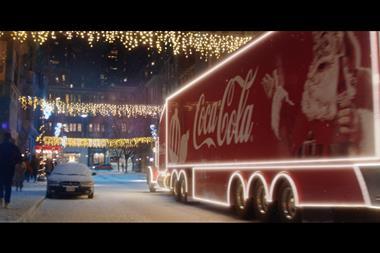
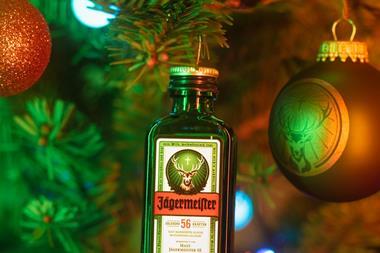
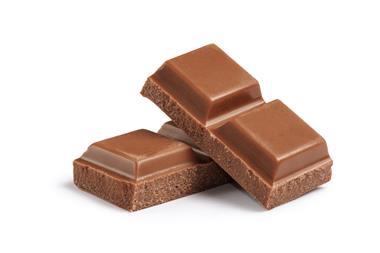
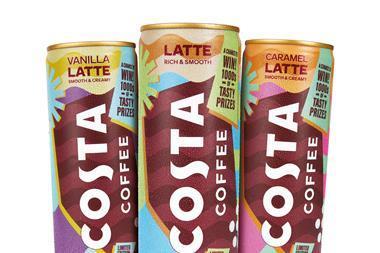

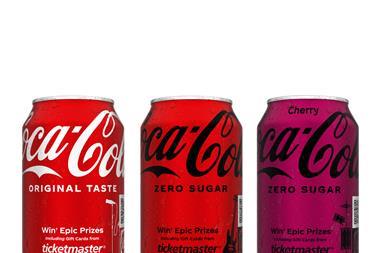
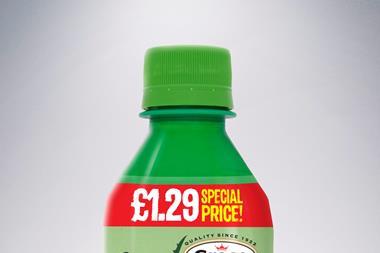
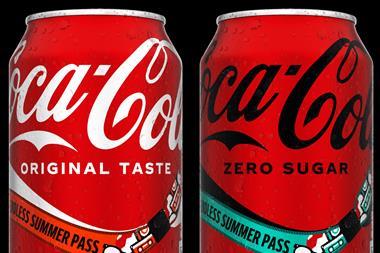

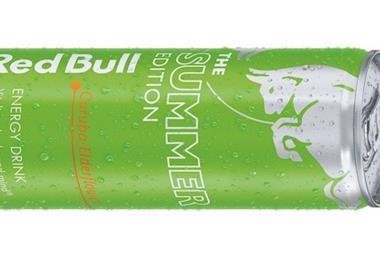
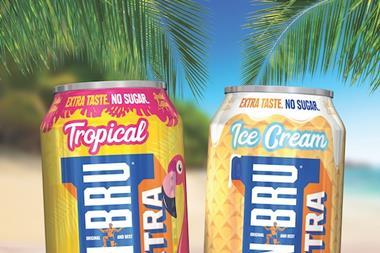
No comments yet